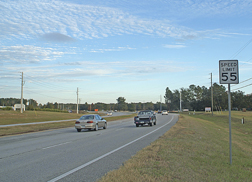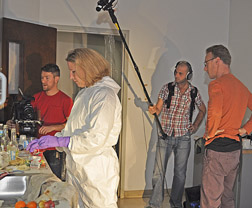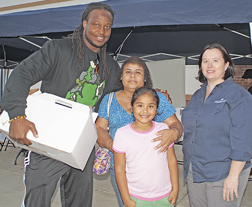HIGH SPRINGS – A forensic audit of the High Springs Community Redevelopment Agency (CRA) for fiscal years 2008-2012 was completed in October at a cost to the City of High Springs of $11,000.
Michael G. Kessler, President of Kessler International in New York, has since forwarded the audit findings to the City. Kessler noted that CRA funds had been given as “grants” to other community entities; CRA funds were used for items not usually allowed, confusing accounting procedures and the need for the CRA to establish its own bank account separate from the City. Kessler also reported that the CRA was unable to provide some requested records.
Several CRA Board members expressed concern about the report. In response to the audit, Board member Sylvia Newcomb delivered written comments at the October CRA meeting concerning past actions taken by the City, by Main Street, by the Community Development Corporation (CDC) and related officers. Upon hearing the audit results Board member Ann Carter said she would like to see those who had inappropriately used CRA funds be “brought to justice.”
Among Kessler’s comments that seemed most disturbing to Board members was his team’s inability to obtain all of the CRA records, which were requested during the audit.
At the Nov. 8, 2012 commission meeting, previous city manager Jeri Langman responded to that issue commenting that Kessler’s records requests were made during the time her staff were occupied trying to finalize the City’s 2012-2013 budget…a time when the City held two to three meetings per week in an attempt to whittle the budget down.
A further dispute arising from the audit report stemmed from comments made by some CRA Board members alleging that Lucie Regensdorf, who was the Main Street Organization’s Chairman during a portion of the audit review period, had used CRA funds inappropriately to develop a $15,000 commercial for The Grady House Bed & Breakfast – a business she and her husband own.
Lucie Regensdorf denied any wrongdoing and said, “The ‘commercial’ they are referring to is a video shot by Visit Florida, which appears on its website.”
“The CRA,” Regensdorf said, “chose to spend $1,500 of its own money – not $15,000.” She went on to say, “Visit Gainesville partnered with the CRA and paid the other $1,500. Total $3,000.”
Regensdorf charged that the video, which can be viewed at http://www.visitflorida.com/video/310-high-springs, had not been viewed by the current CRA members, as the video clearly shows the springs and other natural areas of interest to visitors, as well as signs of various downtown businesses and of Main Street.
Following additional comments by several CRA Board members, Board member and City Commissioner Scott Jamison suggested the Board learn from the audit and earlier mistakes and move forward doing it right in the future.
CRA Board member and City Commissioner Sue Weller, who had recently attended the Florida Redevelopment Association (FRA) Annual Conference, said afterward that she learned that many cities don’t understand the rules. “Up until three years ago,” she said, “there was no real training on the program. A lot of cities were not aware they could go to the FRA to obtain information on the day-to-day particulars of how to administer the program.”
Weller added, “One of the most important aspects I learned about during the conference is that we need to review and revise our CRA plan every five years to keep it current with the overall plan for the downtown area.” She noted that the High Springs CRA is a 26-year-old Board and “our plan hasn’t changed during that time. The original plan was just passed down from Board to Board to Board with no training,” she explained.
Weller also learned that during review, the CRA should identify everything they want to accomplish during the next five-year period, but to “keep the plan broad based.”
Weller noted that the funds that had been given out by the CRA to other agencies somehow benefited the City. “It may not have been spent within the parameters of what the plan says, but none of it was done for deceitful or fraudulent purposes,” she said. “We are learning from past mistakes and we realize we have to change the way we have been doing things. We need to go forward with the correct procedures in place to make sure we follow the Florida statute and best practices for what is required for the CRA area,” she said.
# # #
Email Cwalker@
alachuatoday.com
 ALACHUA – Motorists traveling through Alachua on U.S. Highway 441 may have noticed a change in speed limits near Progress Corporate Park.
ALACHUA – Motorists traveling through Alachua on U.S. Highway 441 may have noticed a change in speed limits near Progress Corporate Park.

 ALACHUA – It is likely that super sleuth Sherlock Holmes would have been amazed by modern crime scene forensics. And what better location is there than Alachua’s CSI Academy of Florida to showcase mock crime scenes for a film about Holmes. A London-based production company plans to feature the facility in a documentary. The CSI Academy, which is located in the Phoenix Industrial Park at 12787 U.S. Highway 441in Alachua, equips students with the tools necessary to enter into the field of crime scene investigation and to create more jobs within this field.
ALACHUA – It is likely that super sleuth Sherlock Holmes would have been amazed by modern crime scene forensics. And what better location is there than Alachua’s CSI Academy of Florida to showcase mock crime scenes for a film about Holmes. A London-based production company plans to feature the facility in a documentary. The CSI Academy, which is located in the Phoenix Industrial Park at 12787 U.S. Highway 441in Alachua, equips students with the tools necessary to enter into the field of crime scene investigation and to create more jobs within this field.  Atlanta Falcons Linebacker Michael Peterson (left) and Hitchcock’s Market’s Candi Kish (right) are joined by Alachua family Gloria and Michelle Garcia (Center).
Atlanta Falcons Linebacker Michael Peterson (left) and Hitchcock’s Market’s Candi Kish (right) are joined by Alachua family Gloria and Michelle Garcia (Center). Downtown Alachua welcomed a bevy of activity Sunday as the 10th annual Harvest Festival was in full swing most of the day. With parking around the Main Street area at a premium, festival goers parked along Skinner Park and near Alachua City Hall, walking several blocks to the historic downtown area. Music, food, children’s activities and vendors selling a wide ranging variety of goods and services were on hand. The e
Downtown Alachua welcomed a bevy of activity Sunday as the 10th annual Harvest Festival was in full swing most of the day. With parking around the Main Street area at a premium, festival goers parked along Skinner Park and near Alachua City Hall, walking several blocks to the historic downtown area. Music, food, children’s activities and vendors selling a wide ranging variety of goods and services were on hand. The e